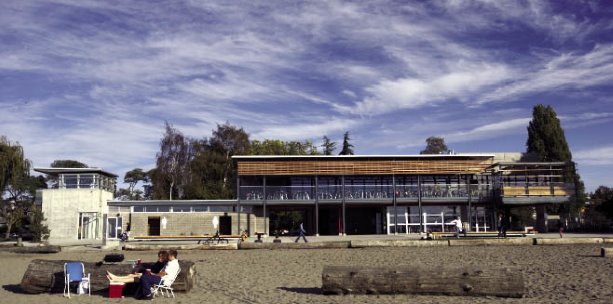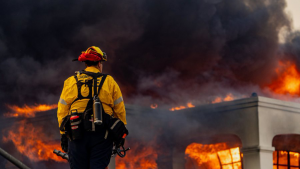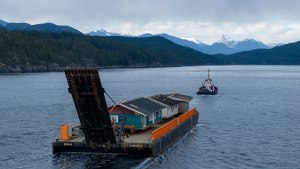Today is the 30th anniversary of the CN Tower, undeniably the one structure that has had the greatest impact on Toronto’s evolving skyline.
Construction
CN Tower still inspires after 30 years
Experts involved in its design, construction share memories
TORONTO
Today is the 30th anniversary of the CN Tower, undeniably the one structure that has had the greatest impact on Toronto’s evolving skyline.
Coined a “wonder of design, engineering and construction,” and bearer of the title “World’s Tallest Building and Free Standing Structure,” the CN Tower has served as an important telecommunications centre for the broadcasting industry since 1976.
“Towers seldom get built, despite the fact that they are very profitable, because of the huge amount of uncertainty which is inevitable on the construction cost, potential revenue, and design success side,” Ned Baldwin, project architect, Baldwin and Franklin, told Daily Commercial News.
“CN decided to proceed based on a very low cost forecast and it was very fortunate indeed that we did not exceed that cost by more than 250 per cent.”
Faced with a problem of diminishing signal strength because of “high-rise” additions in the area, Canadian National set out to build a communications platform to satisfy industry demands.
Construction began in February 1973 with the removal of 62,000 tons of earth and shale, and the pouring of a thick (22 feet deep) concrete and steel foundation.
Project manager Andre Jordan, reflecting on the building and design process, said, “we worked with the designers developing a design to make it constructible.
“At the beginning, the initial design didn’t seem constructible, so we influenced the design to make it a constructible project.”
Key project team members were: NCK Engineering as structural engineer; John Andrews Architects; Webb, Zerafa, Menkes, Housden Architects; and Foundation Building Construction and Canron (Eastern Structural Division).
Baldwin referred to the construction as a “unique” period in time, saying “the project as a whole was six years of high stress, but exhilarating work.”
He noted the project became the equivalent of the U.S. space program for Canada “with every supplier and sub contractor around anxious to participate just for the bragging rights and often not much more.”
Work on the project was extensive: 1,537 labourers worked round the clock, five days a week for 40 months, pouring concrete into a massive “slipform” supported by a ring of hydraulic climbing jacks to create the tower’s distinct vertical shafts.
Adrian Sheppard, an architecture professor at McGill University, says many people today aren’t aware how challenging it was to build to such height without scaffolding.
“The CN Tower is an engineering feat. It looks simple, but the construction was very difficult,” he explained.
“They never stopped pouring concrete; pouring had to be absolutely continuous for about a year. They even accounted for the earth’s rotation because of gravity…control of the construction was absolutely phenomenal.”
Jordan confirmed the building of the main tower was demanding and complicated.
“I have been in this business for over 40 years and this is one of the most difficult and exciting projects I have ever been on,” he reminisced.
“The construction for the main tower, the antenna and the restaurant level were very complex. For the restaurant, the forms were built on the ground and then hydraulically lifted into place.”
Construction on the tower’s sphere (SkyPod) began in the summer of 1974. The SkyPod is now home to 360 The Restaurant and the Wine Cellars; both were added in the mid-1990s.
The construction at the base of the SkyPod plays an integral role in the building’s function.
The tower’s microwave receivers serve as the main centre for FM broadcasters; incoming signals are received and fed up the antenna for transmission to broadcast networks such as CBC, CTFO-TV and City TV.
The construction of the antenna was challenging for the engineers and construction workers.
“We analyzed various methods for erection and we finally settled on the helicopter as it was the most practical,” Jordan said.
Olga, a Russian Sikorsky helicopter, was commissioned to assemble the 36 pieces of the antenna onto the structure while workers bolted the pieces into place.
Jamil Mardukhi, an engineer with NCK Engineering, recalls the erection of the antenna with the helicopter.
“One of the most exciting moments for me was when the helicopter was working on the antenna,” he said.
“It still stands out in my memory as an exciting moment today.”
On March 1, 1975 at 9:52 a.m., Olga placed the final piece of the antenna on top of the tower, bringing the height to 553.33 meters.
The CN Tower was completed on June 26, 1976.
In a class of its own
FAZEENA SAMAD
TORONTO
Years after its construction, the CN Tower continues to inspire engineers and architects, and serves as a measuring stick for the rest of the world’s tallest structures.
Most recently, the United Arab Emirates began construction on the 700-meter Burj Dubai Towers, hoping to capture the title of ‘World’s Tallest Building’ after its scheduled completion in 2008.
“There are not many towers that have been built like this one (CN Tower), not to this height,” explained Andre Jordan, project manager. “Although there are a number of high rise buildings in Dubai and other places that are going beyond the height we went…those are more of a building than a tower.”
Jamil Mardukhi, engineer with NCK Engineering, added he is not worried about the “tall” projects under construction.
“We have had the record of tallest building for 30 years; that’s quite an achievement. The CN Tower is in a class of its own,” he said. “We have heard many threats before and we are still waiting on them to deliver.”
Adrian Sheppard, architecture professor at McGill University, says the CN Tower continues to inspire architects because it is an example of form following function in design and construction.
“It is a very beautiful functional object. It has no superfluous ornaments; no games are being played,” Sheppard explained. “Every piece of concrete and metal has a purpose. One can question its appearance, but it is an example of highly functional architecture. They were very honest about what they were building.”
The past years have seen the CN Tower transformed from a telecommunication hub to an entertainment hot spot.
From 1997 to January 2004, TrizecHahn Corporation managed the building, adding several expansion projects including a $26 million entertainment centre, which offers two multimedia theatres, 1,161 square meters of retail space, a 300-seat Marketplace Cafe, and an arcade outfitted with game simulators.
CN Tower Facts
• The CN Tower is 1,815 feet, five inches tall. It weighs 130,000 tons.
• It cost $63 million to build in 1974 figures, and took about 40 months to complete.
• 1,537 people worked on the CN Tower during construction.
• It required 53,000 cubic yards of concrete, 80 miles of post tensioned steel, 5,000 tons of reinforcing steel, and 600 tons of structural steel.
• In October of 2002, the CN Tower underwent the most dramatic transformation in its history when it shed its skin as part of its upgrade and maintenance program. The Radome, the Teflon-coated fiberglass fabric which protects the tower’s microwave equipment at the base of the rod, was replaced by a team of specialists working inside and outside. High angle experts were suspended from the main pod by ropes and harnesses to execute some of this work
Source: CN Tower











Recent Comments
comments for this post are closed